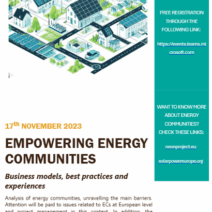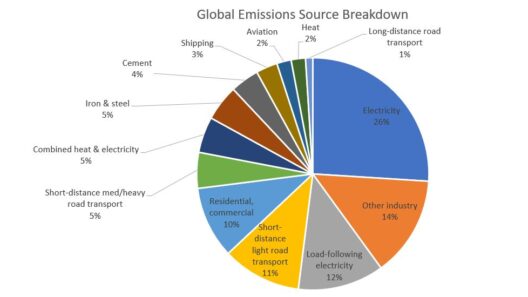In a world bathed in artificial illumination, the flicker of a light bulb is both a beacon of progress and a specter of environmental consequence. Light bulbs and their electricity consumption form an intricate tapestry that interweaves with the multifaceted phenomenon of global warming. This relationship, often overlooked, dramatizes the profound impact of seemingly mundane choices. Let us embark on an exploration of how altering our light bulb behaviors can illuminate pathways to sustainability.
At the heart of this discussion lies the fundamental relationship between electricity generation and carbon emissions. The majority of electricity produced globally is derived from fossil fuels, such as coal, oil, and natural gas, which release carbon dioxide—a potent greenhouse gas—into the atmosphere. This unquenchable thirst for energy propels us toward a precipice, as atmospheric carbon levels continue to rise, contributing to the warming of our planet. Therefore, our choices in light bulb usage directly influence this capricious balance.
Consider the incandescent bulb. This venerable titan of lighting has long reigned as the household staple. Yet, like a comfortable but outdated friend, it clings to tradition while languishing in energy inefficiency. Incandescent bulbs convert a mere 10% of the energy they consume into visible light, with the remainder dissipating as heat. Thus, while they may cast a cozy glow, they do so at an environmentally detrimental cost.
In stark contrast, the light-emitting diode (LED) bulb emerges as the harbinger of change—a paragon of efficiency in an era desperate for innovation. LEDs consume up to 80% less energy than their incandescent counterparts while boasting a lifespan that can exceed 25,000 hours compared to just 1,000 hours for traditional bulbs. Each LED bulb is akin to a steadfast sentinel, standing guard over energy waste, while vastly reducing individual carbon footprints.
Making the switch from incandescent to LED bulbs may seem like a single drop in the ocean of global energy consumption, yet small changes can coalesce into impactful waves. When millions of households choose energy-efficient lighting, the aggregate reduction in electricity demand sends ripples through power plants, thereby decreasing overall carbon emissions. This phenomenon echoes the principles of cumulative impact, where discrete actions collectively yield substantial results.
Moreover, the allure of LED technology extends beyond mere energy savings. The economic advantages also shine brightly. While the initial purchase price of an LED bulb may be higher than that of an incandescent bulb, the decrease in energy costs over time and the longevity of the product render LEDs a wise investment. Budget-conscious consumers find themselves simultaneously addressing environmental concerns while enhancing their economic stability.
Yet, let us not merely extol the virtues of LEDs without acknowledging the importance of mindful electricity consumption. The ambiance illuminated by our choice of light bulbs must be matched by a conscientious approach to electricity usage. Turning off lights when they are unnecessary, utilizing natural light during daytime hours, and investing in smart technology that adjusts lighting based on occupancy are practices that, together, create a synergy that maximizes sustainability.
As we venture deeper into the labyrinth of electricity use, one must also consider the origins of the energy that fuels our light bulbs. Renewable energy sources, such as wind, solar, and hydroelectric power, present tantalizing solutions to our dependency on fossil fuels. By supporting local initiatives that invest in renewable energy infrastructure, consumers can align their energy consumption with a greener ethos. Choosing to source electricity from renewable providers metamorphoses our light bulbs from mere tools of illumination into instruments of hope for a sustainable future.
The narrative of light bulbs and electricity use entwined with global warming is enriched further by the wave of technological advancements that promise to transform our relationship with energy. Smart lighting systems, equipped with sensors and timers, provide unprecedented control over our electricity use. These systems can adapt to our daily routines, ensuring that we wield energy efficiency at our fingertips, effectively mitigating contributions to climate change.
Beyond the individual household lies the powerful potential of collective advocacy. Communities can mobilize to promote energy-efficient practices and renewable energy initiatives. By galvanizing public support for legislation that encourages energy-saving infrastructure and technology, communities can initiate significant shifts in energy consumption patterns at a systemic level, influencing broader policy reforms that resonate far beyond local borders.
Amidst discussions of global warming, one must remain vigilant of the proverbial whisper of hope. Each minor shift in our daily lives, particularly concerning energy consumption, contributes to a chorus of resilience against climate change. Whether it be embracing LED bulbs, becoming a steward of electricity use, or advocating for renewable energy, every action we take fosters an ecosystem of responsibility and innovation.
Ultimately, the journey toward environmental stewardship need not unfold in grand gestures. The path to sustainability is lined with the illumination of informed choices—each light bulb replaced, every ounce of energy conserved, and all community efforts coalescing into national movements. As the principles of ecology suggest, every moment we illuminate the world can be an opportunity to illuminate our collective future, harmonizing technological advancement with environmental accountability.
As we navigate this duality of modernization and conservation, let the metaphor of lighting our way guide us: we stand at a juncture, where every decision ignites potential change. In the grand tapestry of climate action, light bulbs and electricity use serve as vivid threads that carry the weight of our responsibility—underscoring the truth that small changes can create a big impact in the fight against global warming.







